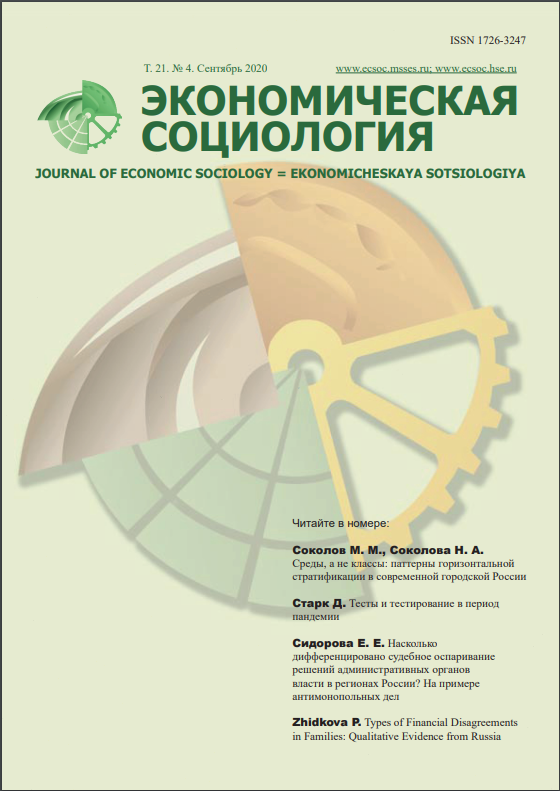Arhythmic Tempo: Dynamics of Readiness to Join the Collective Actions in Russia (1996–2019)
Abstract
The propensity of the public to protest is a dynamic process, the direction of which determines the level of political stability. Aggregate indicators of the readiness to act collectively against declining standards of life can be used as a thermostat that indicates the level of economic grievances in society. What explains these dynamics? Do incremental changes in objective economic indicators such as inflation or unemployment matter the most, or is it the subjective evaluation of the situation in the country that drives protest attitudes? In this paper, I argue that two mechanisms link inflation and unemployment to the readiness to join economic protests: first, high levels of both indicators increase the gap between actual and desired consumption levels; second, high levels of inflation and unemployment signal the lack of governmental competence. I also argue that the subjective evaluation of the direction of the country has an independent effect on the aggregate level of readiness to join the collective actions with economic demands. Statistical analysis based on the autoregressive model with distributed lag (ADL) confirms the hypothesis of the consumer price index and unemployment’s lagged impact on the readiness to protest, while public optimism exhibits both short- and long-term effects on the protest mood. The analysis also reveals the high level of persistence in the dynamics of protest attitudes. The study contributes to the discussion on the determinants of the mobilization and significance of objective and subjective economic grievances.













